On April 25th, we slipped out of Pruth Bay on Calvert Island with the sun peaking through the clouds.
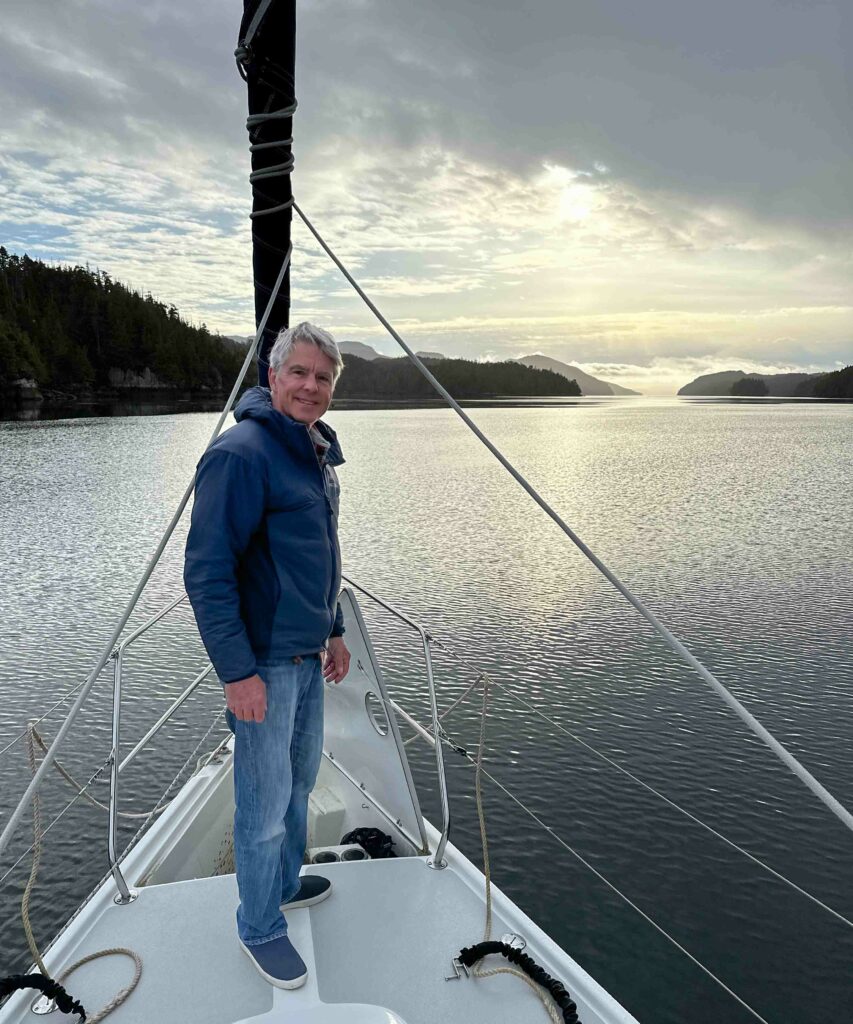
Below Meay Channel to the north of Pruth Bay.

Being on watch and alert is so important in these waters. Hitting a log like this one would end our trip and possibly worse!
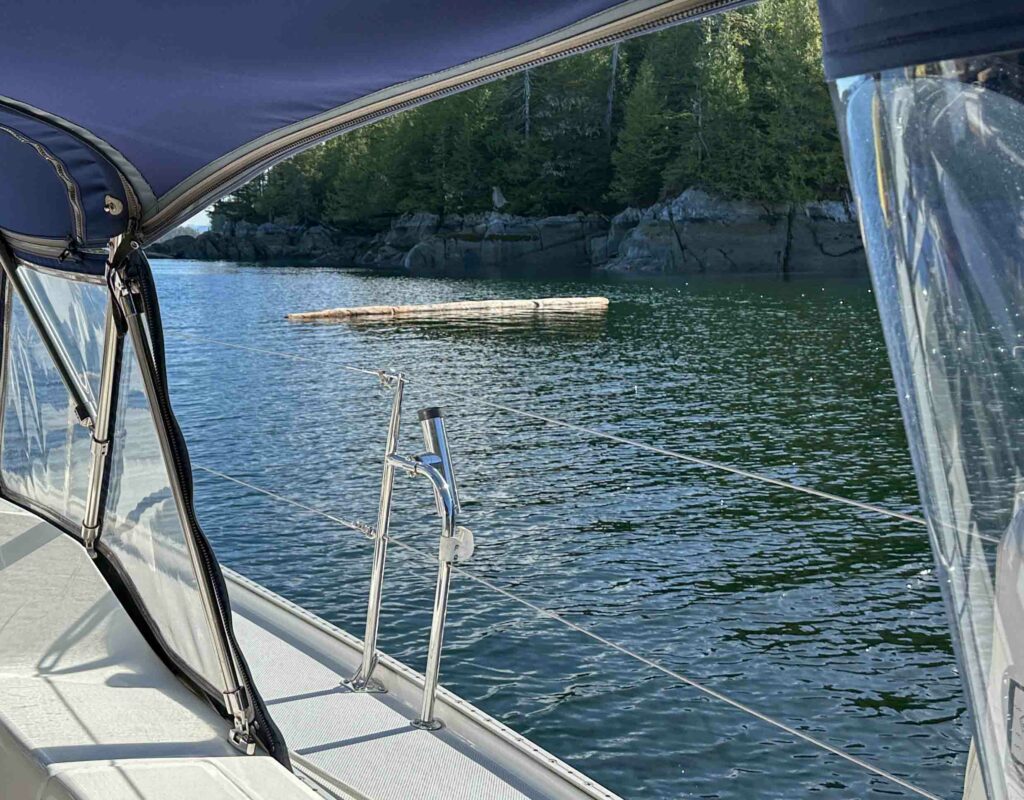
Once through the Meay Channel, the seas were open to Japan! An uncomfortable swell with a short period hit us broadside. We decided to turn to starboard and take the inside route up Fitz Hugh Sound which would be more protected. Destination: Shearwater.
As we passed through Lama Passage, we saw a sailboat coming up the Hunter Channel. No AIS was being received yet but they were sailing. We suspected it was our friends, Al and Irene on Darwin Sound and as we got closer, the AIS picked up their signal. We unfurled our main sail and genoa and followed them up the channel. Avid sailors, they were embarrassed we caught them towing their dinghy! They had planned on poking around some islands to the south but decided to go to Shearwater because we might be there!
We had spent weeks emailing, texting and messaging each other. They had left Nanaimo on April 9th and we left Vancouver on April 20th. They had definitely slowed down to try to let us catch them which was very kind. We had kept the throttle down to make the trip as quickly as we could. Now, finally, we were cruising together! Wonderful to have company on these long passages and in the empty anchorages.
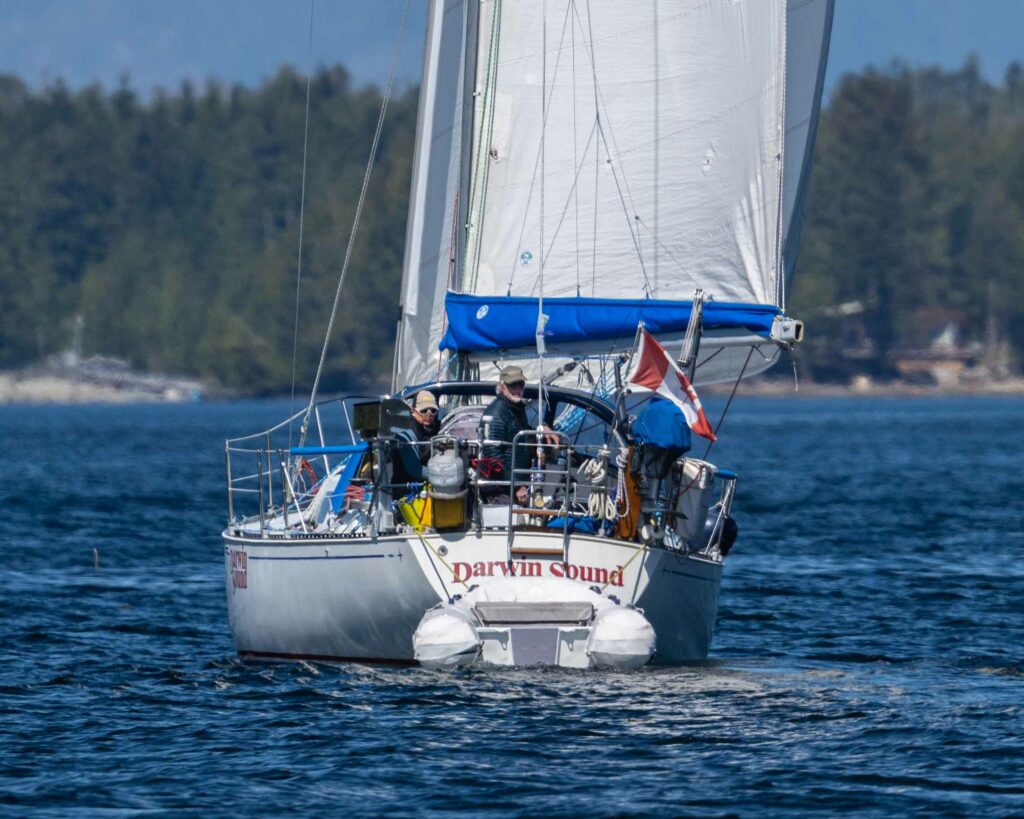
We tied up at the Shearwater dock. Irene and Al decided to anchor off the end of the bay. They prefer to anchor whenever they can. Al loves watching for birds and knew a pair of sandhill cranes were resident near their anchorage.
They arrived at the dock on their dinghy and we had a quick hug and a beer together. We discussed the forecast and decided it would be good to have a day in Shearwater to catch up on laundry, emails and relax.
We took showers ashore to conserve our tank water. We were uncertain when and where we could refill our tanks .
The local advised not to fill our tanks with their water which was from a cedar cistern. It had a bit of a taste and he said, “I drink bottled water”! We felt it was wise to wait till Klemtu to fill our tank.
We had dinner at the Shearwater Bar & Grill both nights and watched playoff hockey. The first night, the Canucks won which was well received by the local patrons. The second night, the Leafs were playing but the bar staff were not that happy to turn down the music and broadcast the game, but they did and we were grateful. We can recommend the chicken wings and beef dip.
Below, a few images from Shearwater. An advantage of leaving in April is the docks are empty other than the odd fish boat and water taxis.

Below the Shearwater store with some historical figures painted on the wall. It was the World War II hanger (to be verified).
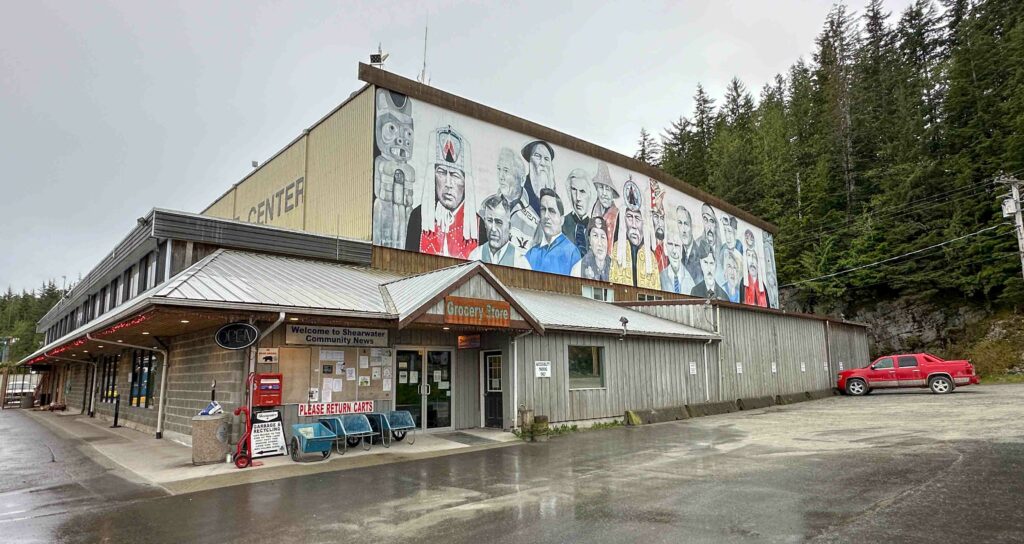
Below, I snapped this with my iPhone looking down below the surface at 90 degrees from the side of the dock. Many anemones and other living creatures were somehow finding a way to sustain life. There are so many beautiful things in the world we rarely have a chance or take the time to see.
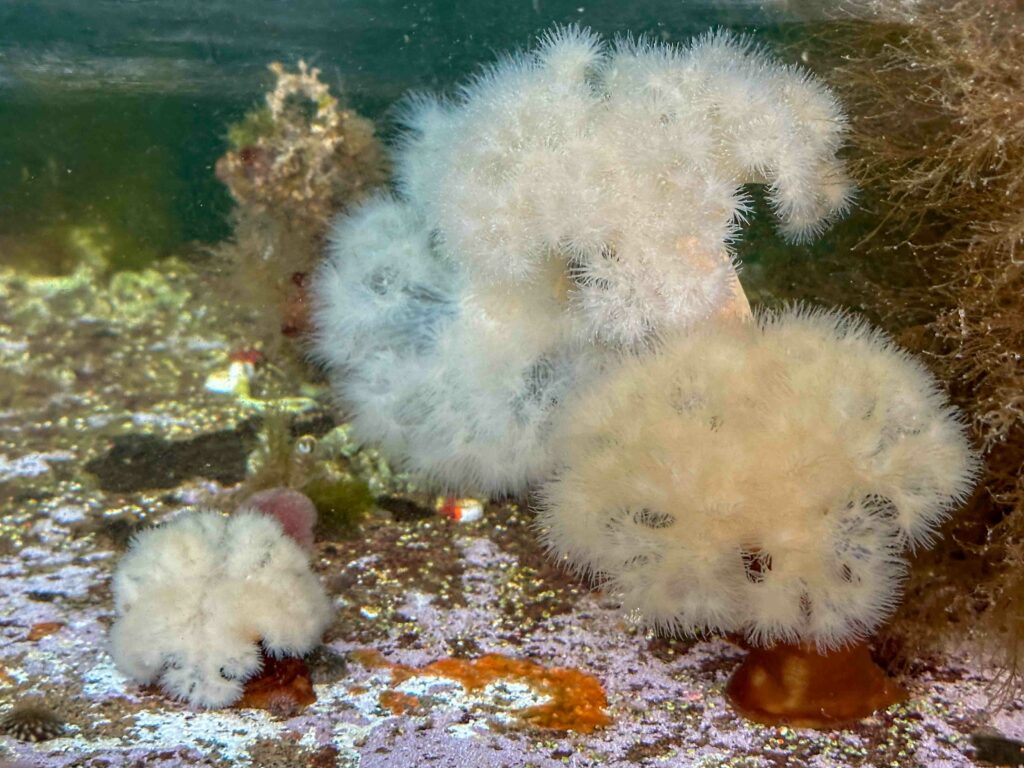
We decided to leave Shearwater with Darwin Sound around 7am on Sunday. It was calm and the sun was trying to come out. Al & Irene circled by our boat on the dock as we powered up. We joined them in the channel minutes later. We shadowed them with our sail maneuvers most of the morning. We had winds from about 10 to 15 knots True from almost behind, with a little higher Apparent wind. Rain started and became heavy. We were okay in our enclosed cockpit but the rain was making its way through the zippers and seams here and there. I went around wiping it off the cushions every few minutes. Below, Irene’s photo of us sailing that morning.

When we reached the open ocean outside the protection of the islands, it got very rough with some 2 to 3 metre swells and winds increased to 20-25 knots. The boat was rolling around but handling the conditions well. We quickly heard if anything was not well stowed. We became over-powered. The sails and rigging were making a racket. We sailed downwind to ease the pressure on the genoa so we could furl it but it was still a challenge. We motor-sailed with the main out for a time but the wind went directly behind as we turned in the direction of Klemtu. The main was jibing this way and that, so we turned into the wind and the big swells and began furling it. Keeping the boat heading into the wind in those seas was tough, but it had to be done. We turned around to get back on course and continued motoring toward Klemtu. The seas state improved as we approached land. We are still new to this boat so it was good practice to be tested with some rougher conditions.
In a calmer moment.
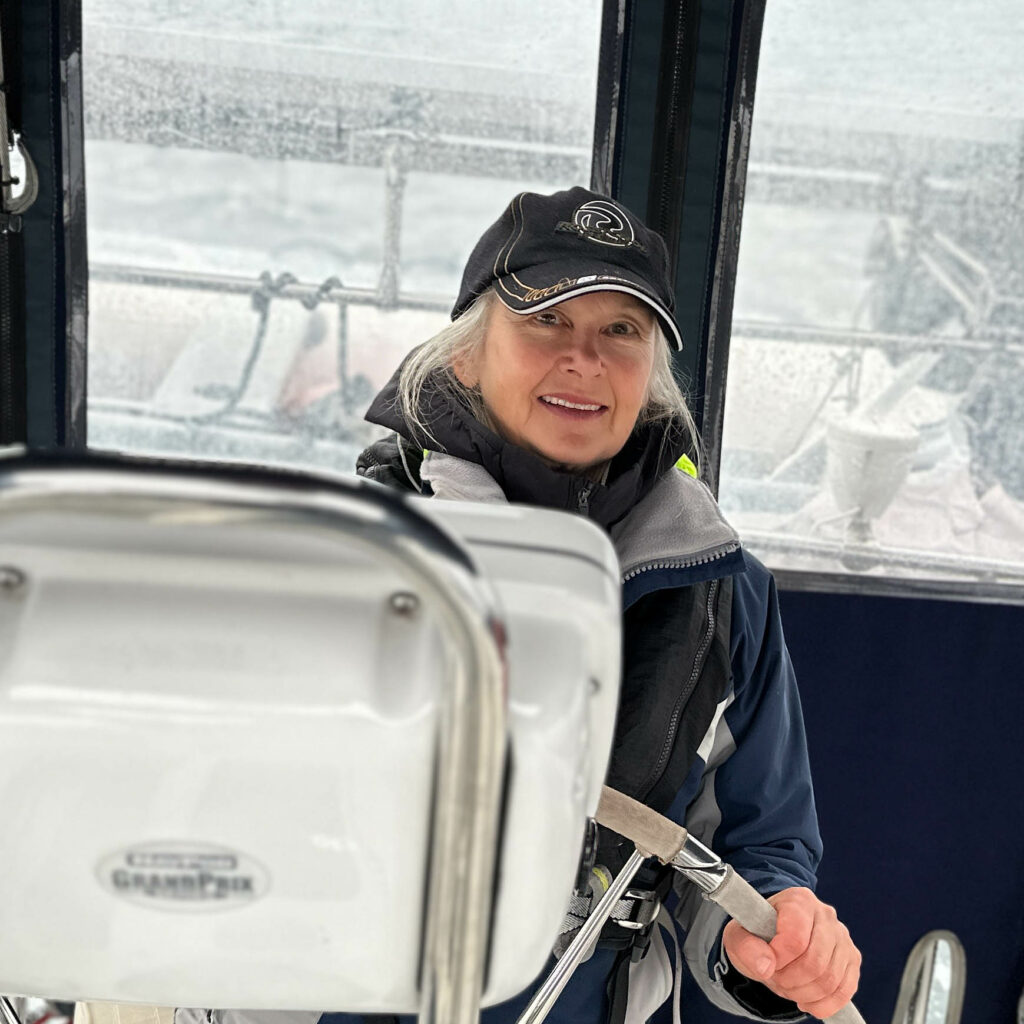
Approaching the channel, Dall Porpoises visited our boat and crossed back and forth under the bow. It was raining and too rough to go out on the deck to take photos but it is always a thrill to see them.
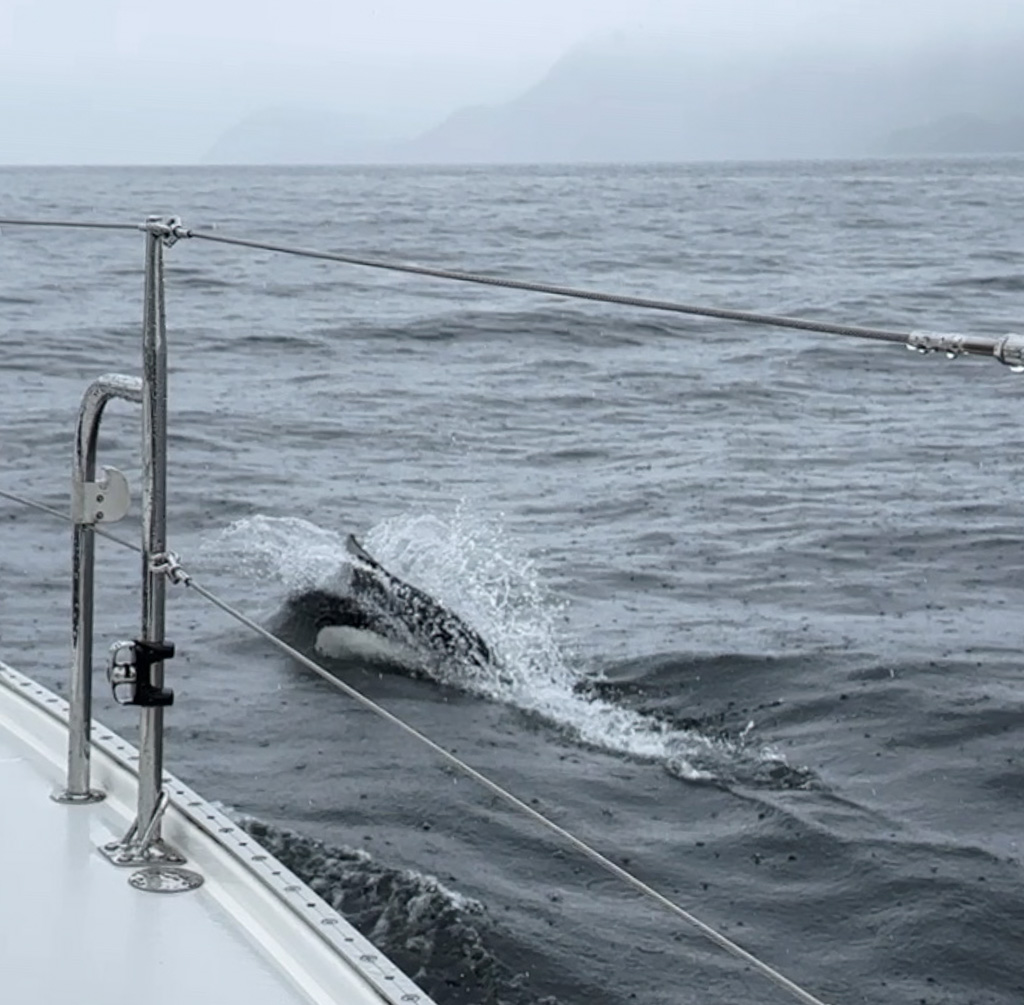
As we approached Klemtu around noon, Al & Irene hailed us. They had decided to stop before Klemtu and anchor in Clothes Bay. They felt we would enjoy this anchorage over the docks in Klemtu, a good call. We followed them, dodging logs along the way to the anchorage. It was raining and 5 degrees at sea level at noon. Note the dusting of snow on the mountains surrounding the bay. Below is Darwin Sound in the anchorage as we were entering the bay.
We sat down to a bowl of chicken soup for lunch and received a text from Irene. She wanted to discuss moving on to an anchorage 20 NM north. She thought the sun might come out, and we would have the flood tide till 5pm to push us along. We had looked at the forecast and thought a cold front was about to hit us which could bring strong wind and possible lightning. Monty didn’t want to proceed. In less than an hour, hail pounded on our deck. It was covered in ice pellets. Below, this is looking up at our hatch from inside.
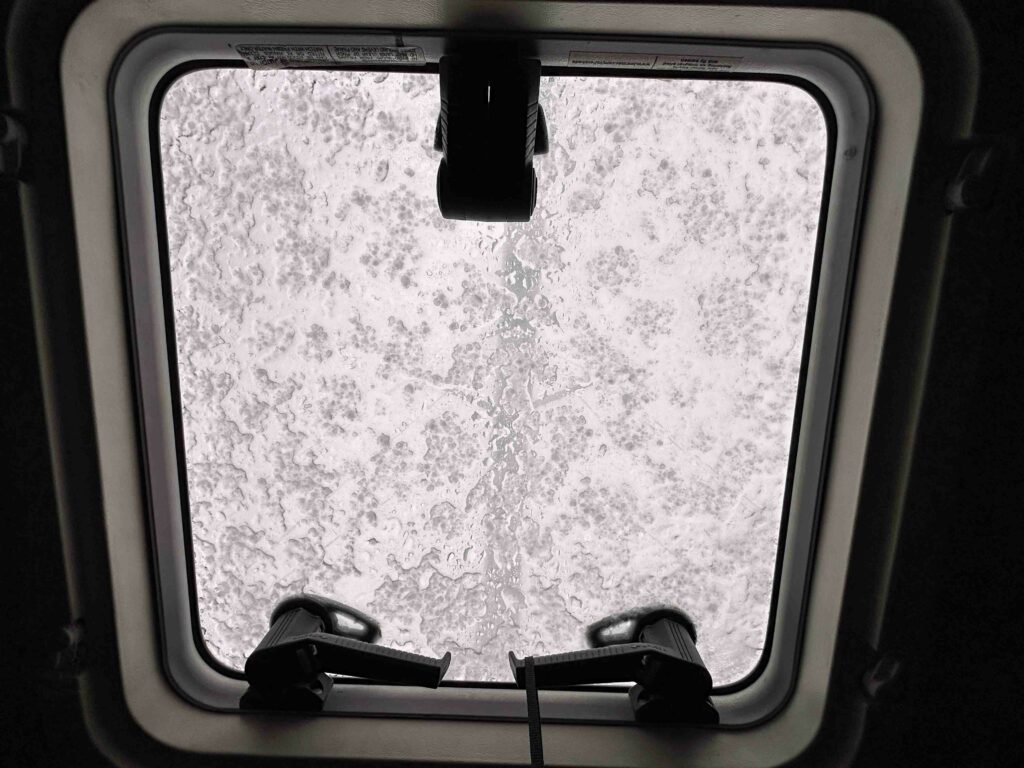
We can’t image being out in that weather. I think Irene and Al, with their open cockpit, were happy they stayed put too.
It snowed overnight. Monty got up several times turning the hydronic heater on and off to manage the extreme chill in the cabin. Ice built up on the decks and hatches overnight with the snowfall. By morning, our boat was damp with condensation. Drips from the hatch above our bed woke me up as it hit my pillow.
Below, Darwin Sound with snow on their canvas.

That morning, we waited for the temperature to rise and melt the ice on the decks. It warmed to about 4 degrees and was raining lightly. We headed to the fuel dock at Klemtu for fuel and water, which we heard had good clean water. The metal docks had black car tires to protect boats from rubbing against the steel, but tires are not friendly to yachts with white gelcoat hulls. “Fender up!”
As the skippers attended to the refuelling and filling water tanks, Irene and I visited the Klemtu store (formerly a cannery) which had just received fresh supplies. Neither of us needed much but it was good to see the store was well stocked.
The flood tide would start around noon so the plan was to move north with it to Butedale. As suggested in the Waggoner 2024 Cruising Guide, I had sent an email to the in-charge of Butedale and promptly received a pleasant reply and permission to tie up at the dock. More on Butedale soon.

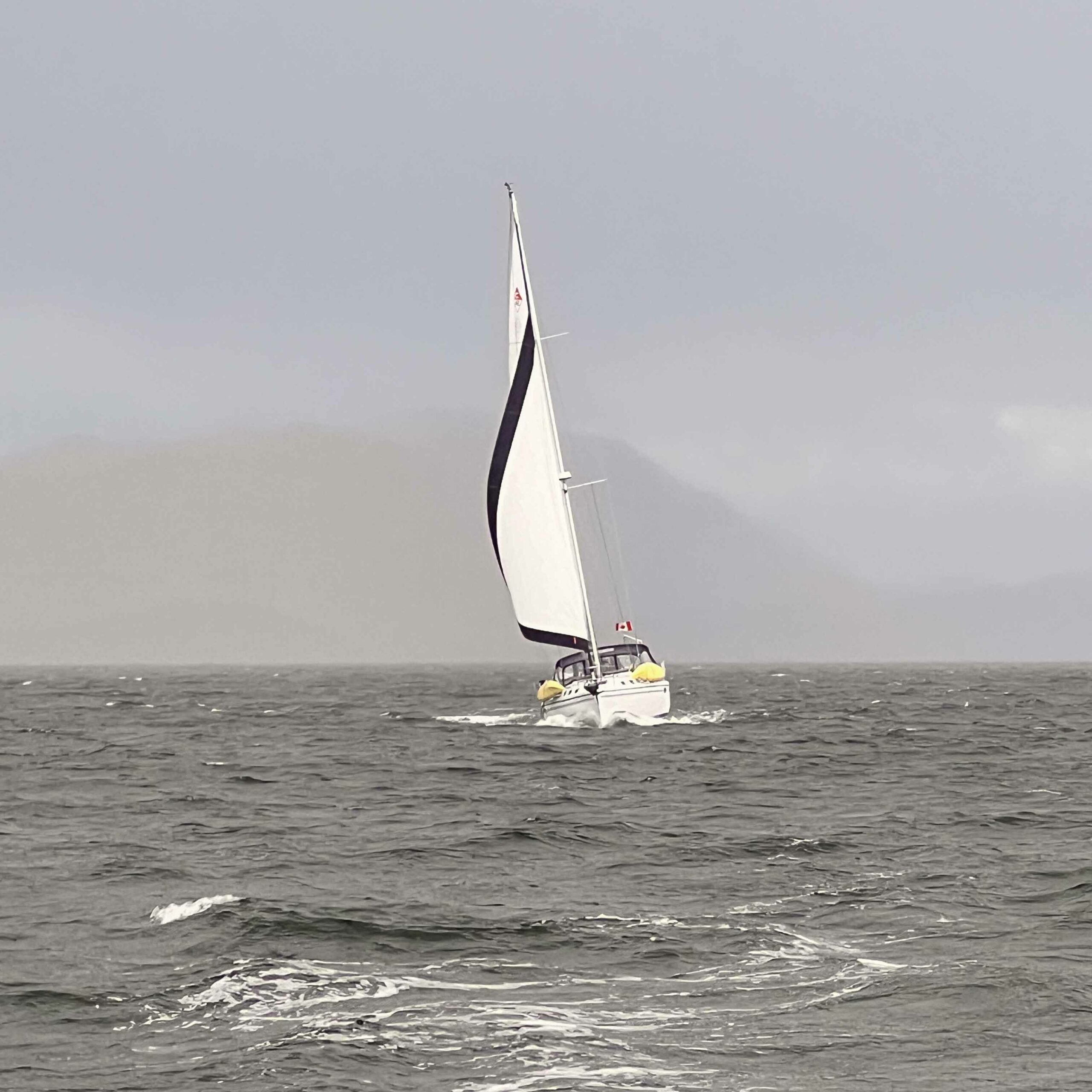

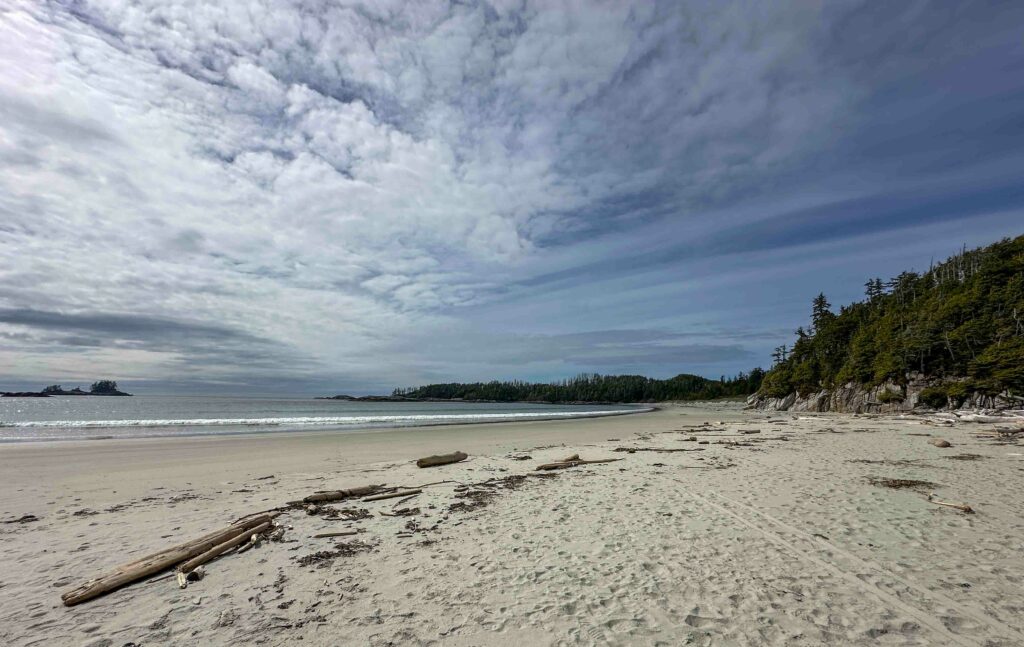
One comment in this post
Great travel stories and photos. You guys are becoming intrepid cold weather sailors just like the Whitney’s.
Keep them coming. Love to be vicariously cruising with you from the armchair
Xo
J&R
R says. … go Canucks go